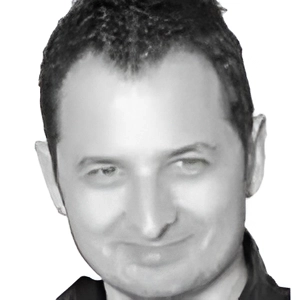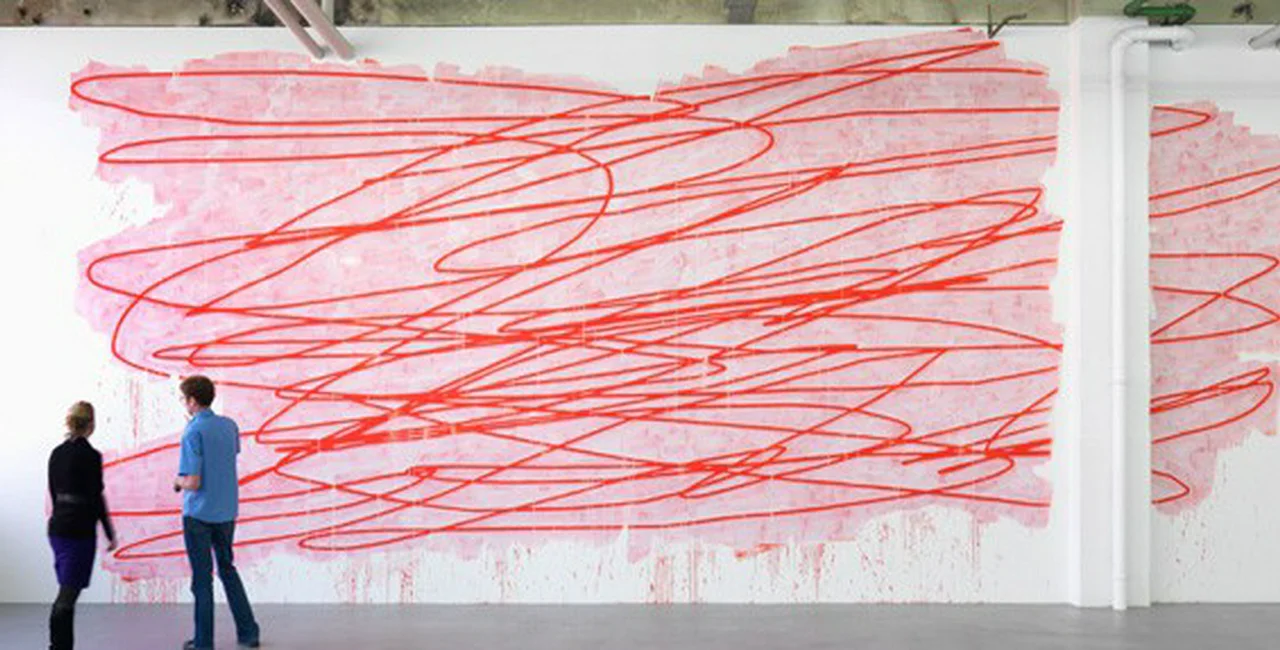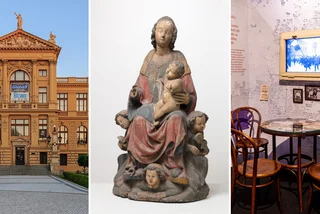Modern art is often misunderstood and sometimes lampooned for its over-reliance on highly intellectualized explanations and themes that seem to resonate only with the initiated. And while it still indulges in fancy verbiage to position its artists, the Prague Biennale 5 presents many works that you will feel with your gut even if you did always suspect that a kindergarten kid could outdo (or out-blue) Yves Klein´s “Blue Monochrome”.

PARTNER ARTICLE
According to one of its founders, Giancarlo Politi, the Prague Biennale is “the most important art event in Central Europe”. And it´s hard to argue with such a claim, as the exhibition is indeed very expansive, featuring three floors of cutting-edge art. The focus is on breaking new talents from the Czech and Slovak Republics, as well as artists from US, Italy, Germany, Hungary, Great Britain, Portugal, Canada, Norway, Switzerland and more!
As you might suspect from its name, the Biennale is held every two years, starting from 2003. This year it´s taken over the Microna, a former aircraft engine factory. The exhibit has opened on the 19th of May and will run until September 11 (perhaps not coincidentally).
The main focus this year is on painting, in a section fortunately named EXPANDED PAINTING. This section highlights the latest in contemporary painting and fosters such art conversations as “duality figuration versus abstraction”.
As Giancarlo says, there is an old adage ‘Old hens make the best broth´. No old hens at the Biennale! “Contemporary painting contains nothing old at all – though the soup remains delicious,” concludes director Politi.
The Expanded Painting is further expanded into several exhibits:
The “Portraits of Power” focuses on artists who live and work in Hungary and choose to explore its imperial and communist pasts and the “often strained relationships between society and the individual”. You can expect blurring of the line between reality and fiction as well as the conscious and the subconscious in works by Zsolt Bodoni, Robert Fekete, Attila Szűcs and others.
There is also a section focusing on eight artists from the UK (Graham Chorlton, Sally Payen, Caroline Walker, and more) who explore themes of domesticity and homes.
“The Necessity of Abstraction” explores the promised abstraction in modern German art via artists from Berlin (Friederike Feldmann, Arturo Herrera, Anne Neukamp and others).
Another large part of the Biennale is something called “Art in General”, which features many Czech and Slovakian artists as well as talented works from India and Canada.
The emerging global juggernaut that is India has also been making waves in the arts, exploring issues of sexuality, mortality, politics and religion while investigating the tensions inherent in its rapid modernization. Look for artists like Sarnath Bannerjee, Tejal Shah, T Venkanna and 19 others.
The Czech contingent focuses on ways of facing reality and overcoming time and space via “subjective gesture”. The Slovak artists presented by the Biennale (like Erik Binder and Ilona Nemeth) are interested in “non-communication” in life and the art world that´s full of “noise, misunderstanding and misinterpretation.”

The third uber-division of the exhibit focuses on Italy and is appropriately named “Focus Italy”. It presents artists who establish connections between tradition and cultural growth, while speaking on domesticity and craftsmanship. Another hot topic explored by artists like Yuri Ancarani, Silvia Hell (great name!) and Marco Strapato is called “The Crisis of Confidence” and is born of the low level of confidence in the Italian society (manifested in the current financial crisis).
There is also an interesting section of Italian video artists who are concerned with existence reflected on the screens and Italy´s seduction by ‘the mediatic power of the television”.
In conjunction with the Biennale 5, a second edition of the Biennale Photo exhibit is also taking place. It spotlights the hottest young phenoms in the field of photography from the Czech Republic and beyond.

The main section this year is called “Romantic Construct” and it skillfully presents the thinning boundaries between art and photography. There is also a highlight on new Polish photographers like Adam Lach and Ewa Meissner.

All in all, the Biennale is a wondrous and rich exhibit and you are sure to find something that will help you take a deeper look at the reality around you and tickle your intellectual fancy. Be sure to check it out.
THE BIENNALE PARTICULARS
Location: MICRONA, Československého exilu 4, Praha 4 – Modřany
Hours: Open seven days a week from 12:00 to 19:00. May 19 – Sept 11.
How to get there: Take tram 3, 17 or 21 or bus 253 – stop at Belarie.
Price: 150 CZK (full), 70 CZK (media, students, handicapped)
Web: www.praguebiennale.org













 Reading time: 3 minutes
Reading time: 3 minutes 






















